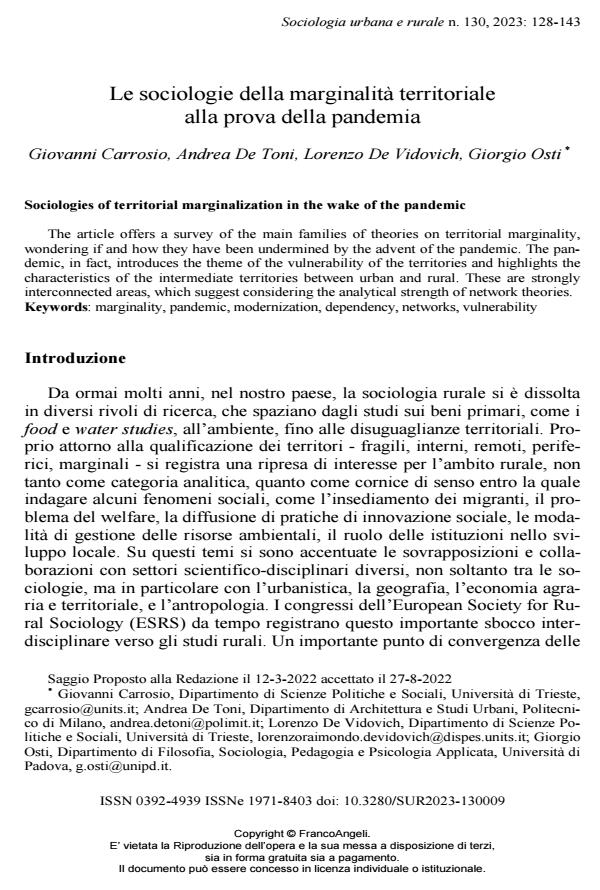Sociologies of territorial marginalization in the wake of the pandemic
Journal title SOCIOLOGIA URBANA E RURALE
Author/s Giovanni Carrosio, Andrea De Toni, Lorenzo De Vidovich, Giorgio Osti
Publishing Year 2023 Issue 2023/130
Language Italian Pages 16 P. 128-143 File size 295 KB
DOI 10.3280/SUR2023-130009
DOI is like a bar code for intellectual property: to have more infomation
click here
Below, you can see the article first page
If you want to buy this article in PDF format, you can do it, following the instructions to buy download credits

FrancoAngeli is member of Publishers International Linking Association, Inc (PILA), a not-for-profit association which run the CrossRef service enabling links to and from online scholarly content.
The article offers a survey of the main families of theories on territorial marginality, won-dering if and how they have been undermined by the advent of the pandemic. The pandemic, in fact, introduces the theme of the vulnerability of the territories and highlights the characteris-tics of the intermediate territories between urban and rural. These are strongly interconnected areas, which suggest considering the analytical strength of network theories.
Keywords: marginality, pandemic, modernization, dependency, networks, vulnerability
Giovanni Carrosio, Andrea De Toni, Lorenzo De Vidovich, Giorgio Osti, Le sociologie della marginalità territoriale alla prova della pandemia in "SOCIOLOGIA URBANA E RURALE" 130/2023, pp 128-143, DOI: 10.3280/SUR2023-130009